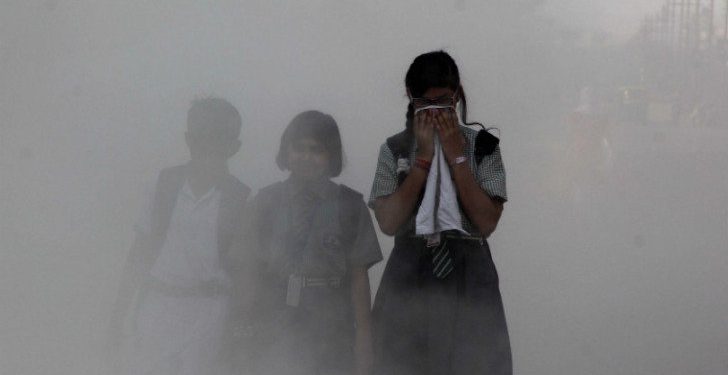It is that time of the year when the quality of air in the national capital dips to unhealthy levels. At the beginning of this week, the air quality was reported just three points short of severe. There were reports that stubble burning, although less than before, continues unabated in many parts of neighbouring Punjab and Haryana. The Supreme Court has prohibited the plying of 15-year-old petrol and 10-year-old diesel vehicles in the National Capital Region. But such actions have been taken in the past as well. The impact of these actions has not been significant, going by the continuing deterioration in air quality in the NCR.
A report of the World Health Organisation released October 29 showed that India has the highest number of air-pollution induced deaths of children below five years of age. According to the study, which evaluated the effect of polluted air on children in 194 countries, at least 1,00,000 children under 5 years died in 2016 alone after suffering health conditions arising from high indoor and outdoor pollution. Indoor air pollution, which is caused by actions such as the burning of fossil fuel like coal, led to the deaths of 67,000 children and about 61,000 children died from outdoor air pollution. Delhi-NCR has turned into a gas chamber, claiming numerous lives. Irrespective of what else the government at Centre may promise in terms of infrastructure, it has failed to provide one of the basic necessities for healthy living.
The Aam Aadmi Party had come to power in New Delhi with certain clear promises and goals for the city, including tackling pollution head-on. The government did make some efforts in the initial stages but later seemed to have lost focus. It is true that this may not be a task for one isolated party or entity. It is a massive project that needs support from all fronts. Delhi is a case study for the entire nation. Other tier-II and tier-III cities are developing quickly into ugly urban nightmares. Unless all development is brought under strict regulation and proper planning is put in place for such expansion, the country will have multiple centres of urban chaos.
Big cities attract people for a variety of reasons, mainly economic. People migrate for brighter work opportunities and hope for a better life. As such, the pressure on resources would be obvious in all cosmopolitan cities. Globally, there are multiple examples being set by big ticket cities in terms of pollution control. London, for instance, introduced electric-powered black cabs — iconic symbols of that city- last year. These electric cabs were obviously designed to help in the creation of a greener London, with the aim to make the city free from fossil fuel run taxis from 2018. These have been replacing diesel cabs, with more than 9,000 electric taxis expected to be plying by 2021. Manufacturers, too, are restructuring their production lines to build more electric vehicles. Carmaker Ford had earlier announced its commitment to go for pure electric vehicles. Dubai, which has been at the forefront of innovations, has made space for the hyperloop project, which is projected as a sustainable public transport model. Such shifts in development gears are not only necessary but inevitable for survival. It might be too late for countries which fail to take note and adapt now.







































